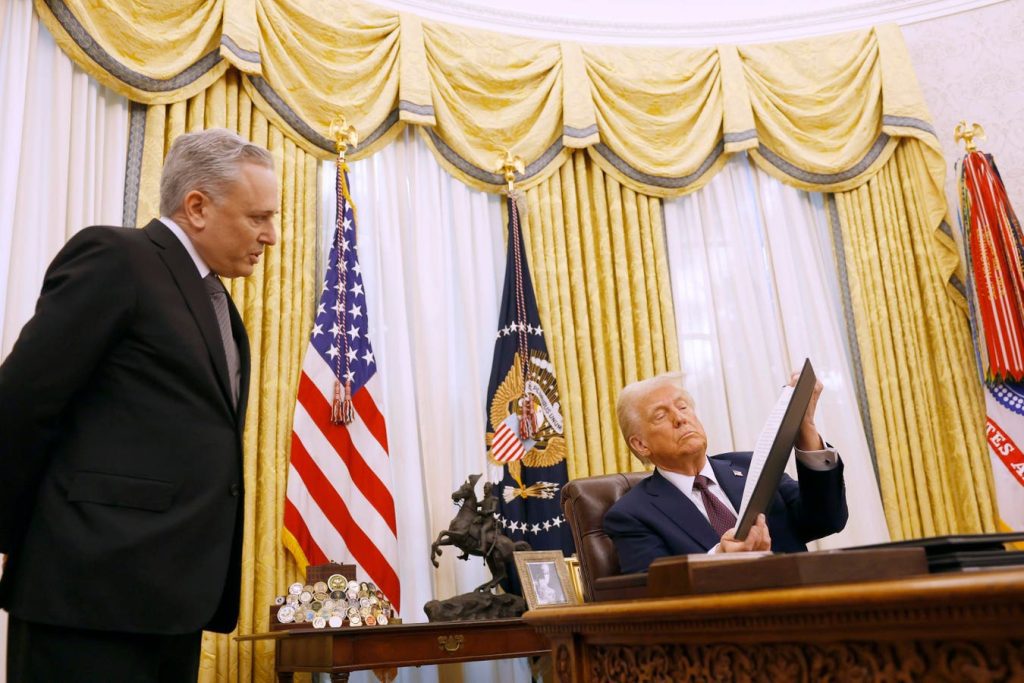WASHINGTON, DC – After taking office, President Donald Trump has enacted several executive orders aimed at positioning the United States as a frontrunner in crypto technology. The White House’s favorable stance on digital assets has led to an influx of innovative policy proposals, including Treasury bonds linked to bitcoin. (Photo by Anna Moneymaker/Getty Images)
Getty Images
Transformational technologies often start small—initially perceived as mere novelties. This tendency often leads to their early dismissal.
Historical instances abound: for instance, gunpowder in China was first utilized for firecrackers rather than weaponry. Similarly, the Aztecs initially used the wheel for toys before understanding its broader applications, and military-grade drones were previously employed by hobbyists for activities like wildlife photography and racing.
The key takeaway is that groundbreaking technologies are omnipresent, but they need a catalyst for adoption.
This catalyst is evident with bitcoin today. What began as “magic internet money” for niche enthusiasts has evolved into a tool for financial strategists, corporate leaders, and, most recently, U.S. government officials.
President Trump’s recent establishment of a strategic bitcoin reserve exemplifies this shift. His “crypto executive order” represents a pivotal moment for digital assets, signaling a change in perception where policymakers are moving from viewing bitcoin as a threat to embracing it as an ally. Advocates like Senator Cynthia Lummis assert that a strategic Bitcoin reserve could significantly reduce the national debt by 2045.
Introducing BitBonds
BitBonds propose a financial product designed to alleviate the Treasury’s debt by hundreds of billions while simultaneously offering investors a risk-free opportunity to engage with the top-performing commodity of the past decade.
Dr. Andrew Hohns, an economist and founder of Newmarket Capital, brought BitBonds into the spotlight during his March 11 presentation at the National Press Club. He argued that, if appropriately structured, BitBonds could drastically decrease the 10-year interest rate for U.S. debt and stabilize the nation’s finances—all while bolstering the strategic bitcoin reserve at no added cost to taxpayers.
Mechanics of BitBonds
BitBonds would function like traditional bonds, with 90% of the funds being allocated to governmental needs and the remaining 10% being used to invest in bitcoin.
At maturity, investors would enjoy the full benefits of bitcoin appreciation, receiving the entirety of the upside up to a compounded return of 4.5%. Beyond that threshold, they would share any further gains, keeping half while the government retains the other half to support the strategic bitcoin reserve.
Learning from Saylor’s Model
The BitBonds concept draws inspiration from Michael Saylor’s success in offering convertible bonds to acquire bitcoin for his company’s treasury.
Saylor’s firm has raised significant funds through corporate debt with a zero interest rate, enticing investors not primarily for yield, but for potential future stock appreciation. The bonds are convertible, meaning investors can exchange them for stock if its value rises significantly, allowing them to benefit from bitcoin’s upsides with reduced risk.
BitBonds offer a similar opportunity but with minimal risk. Investors receive their full principal back at maturity regardless of bitcoin’s market performance, mitigating the concern of default since their investment is secured by the U.S. government.
Potential Impacts on National Debt
BitBonds could provide profound advantages for both investors and the U.S. government. They could not only fortify the nation’s bitcoin reserve in a cost-neutral manner but also substantially reduce interest on the 10-year Treasury.
Just as corporate demand has surged for bitcoin-linked convertible bonds, it is anticipated that BitBonds would experience similar, if not greater, demand, enabling the government to issue them at rates significantly lower than current 10-year Treasury notes.
For example, if the Treasury were to issue $2 trillion in BitBonds at just 1% interest, this could lead to enormous savings of up to $700 billion over a decade.
Looking Ahead
Dr. Hohns recently collaborated with Matthew Pines, director of the Bitcoin Policy Institute, to publish a comprehensive report on BitBonds. Hohns expressed that, with bipartisan support, this model could reduce the U.S. interest expenses while incorporating bitcoin into the federal balance sheet—creating a win-win scenario for all parties involved.
Inquiries into the viability of BitBonds have already reached lawmakers. Senator Cynthia Lummis, a critical supporter of integrating bitcoin into national finances, is currently reviewing the proposed concept. Her backing could potentially propel BitBonds into reality.



